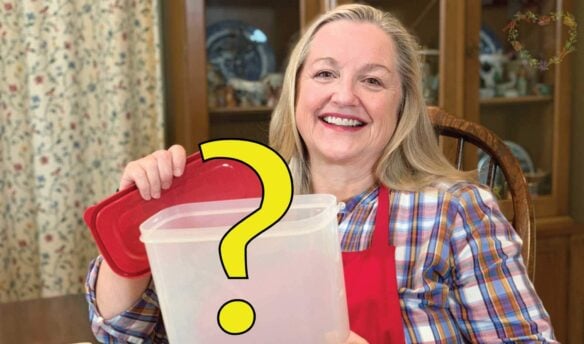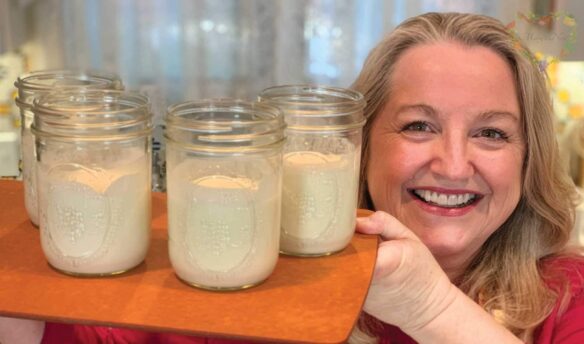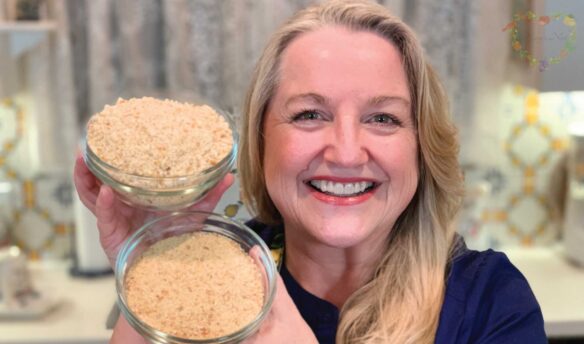Affiliates note: As an Amazon Associate I earn from qualifying purchases. My content may contain affiliate links to products and services. If you click through and make a purchase, I'll receive a small commission. It does not affect the price you pay.
How to Make Natural Food Coloring
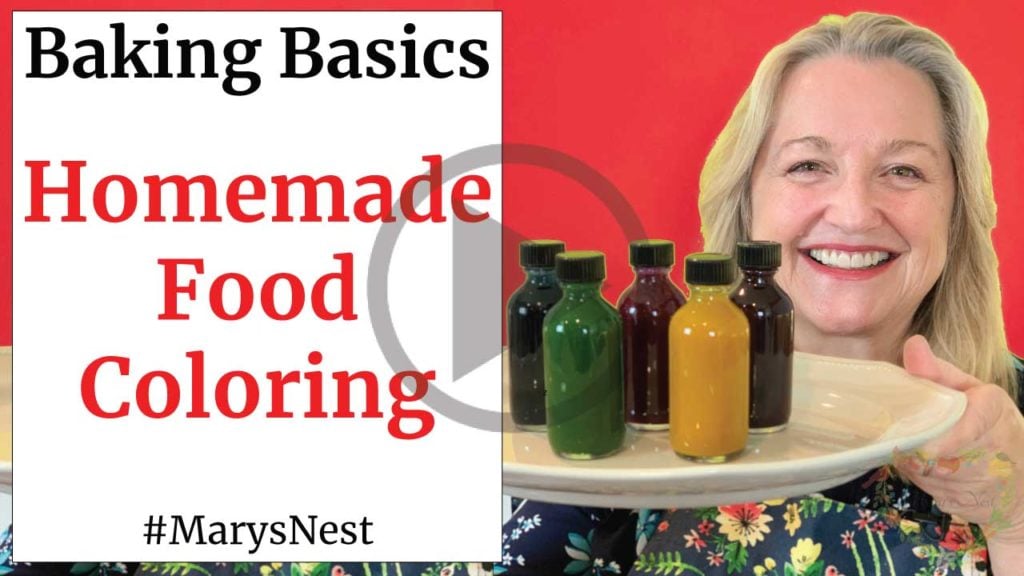
Today, I am sharing How to Make Natural Food Coloring with just a few simple ingredients that you can find in your pantry or at your local grocery store.
All-Natural Food Coloring Ingredients
These homemade food colorings are the perfect pantry staple for the Traditional Foods Kitchen because they are made from 100% natural ingredients, including fruits, veggies, and spices.
And the nice thing about making natural food colorings is that the process is very easy and literally takes just minutes.
What Natural Food Colors Can We Make?
In this video, I keep things very simple so you can make these natural food colors with ingredients you probably already have in your pantry or can easily get from your grocery store. I also use equipment that is found in most kitchens. The colors we’ll make include yellow, purple, red (pink), green, and blue.
What Ingredients Will I need?
The ingredients that you’ll need to make all these colors are simple. Gather up a can of beets, a bit of the spice turmeric, fresh spinach, frozen blueberries, and red cabbage. And the only other thing you’ll need is a pinch of baking soda. (See my printable recipe later in this blog post for the full list of steps.)
Creating Yellow, Purple, Red, and Green

Once you gather up your ingredients, the next steps are simple. I show you how to make each of these colors, step-by-step, in my How to Make Natural Food Coloring video. Here’s a short overview of the process:
- Yellow – Add a bit of water to the turmeric and warm it gently on the stove until all the spice dissolves.
- Purple – Whirl your frozen blueberries in a blender and then strain out the solids.
- Red – Whirl your beets and beet juice in a blender and then strain out the solids.
- Green – Simmer your spinach in a bit of water to soften, whirl away in a blender, and simply strain out the solids as you did with the beets and blueberries.
But What About Creating Blue?
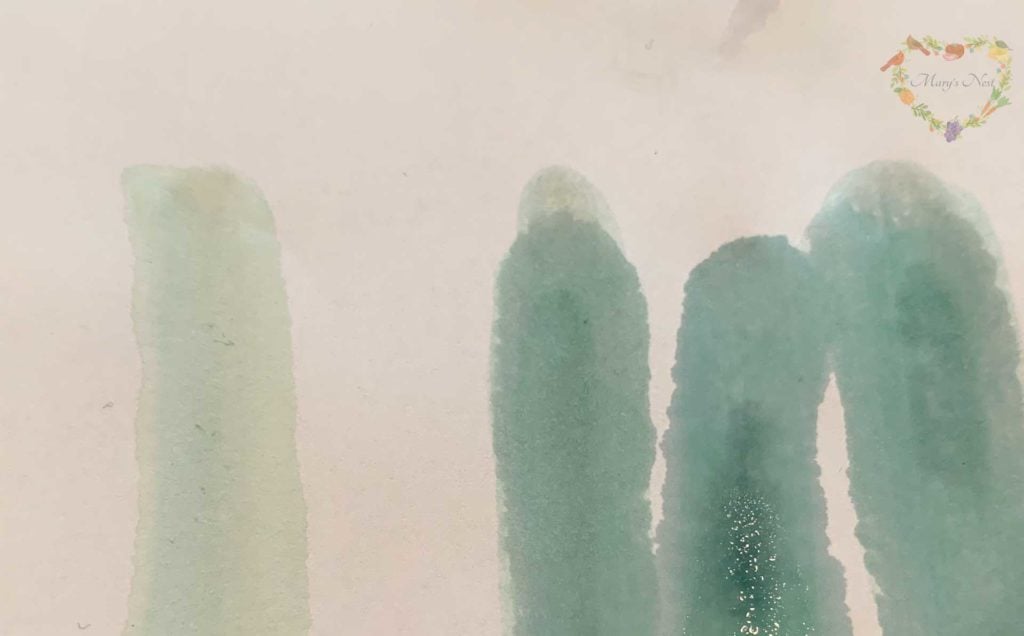
Blue is easy to make, but it just takes an extra step. You’ll simmer your red cabbage in water until it’s soft. Once softened, you’ll strain off the red cabbage and find that you’re left with a lovely lavender shade. But don’t be fooled. That lovely lavender can also be used as a purple food coloring because it can easily turn into other colors when exposed to certain ingredients.
The good news is that’s how we can turn lavender into blue. A pinch of baking soda added to that lovely lavender liquid will produce a deep blue food coloring.
Where Is the Orange Food Coloring?
I didn’t cover how to make orange food coloring in the video because I wanted to keep things very simple. But you can make orange. It just takes a more specialized ingredient or a piece of equipment that not every kitchen has.
First, the easiest way to make orange is to use freeze-dried carrots. Take a handful, puree them with some water, and then strain out the solids. Voilà…you have orange! Note that dehydrated carrots can work too, but the orange color is not as vibrant.
How About Fresh Carrots to Make Orange?
Now, if you would prefer to create the orange color with fresh carrots, you will get your best color if you use a juicer to obtain the carrot juice. That juice will now be your orange food coloring.
Another option is to use a high-speed blender such as a Vita-Mix to puree fresh carrots with the tiniest bit of water. After you strain out the solids, you will have orange.
Experiment with Mixing Food Colors
But what about just mixing our natural red food coloring with our yellow one? Great question! This may or may now work with the homemade colors that you’ve created, so you will have to experiment.
Turmeric can be a bit unpredictable when mixed with other ingredients, and because of its variable nature, you are not always guaranteed a strong orange color if you mix it with a color made from beets or other red-pigmented fruit or veggie. But it’s certainly worth a try!
More Baking Basics Videos and Recipes
Now that you’ve learned How to Make Natural Food Coloring, be sure to check out the other videos in my Baking Basics series:
- How to Make Homemade Vanilla Bean Extract – A Perpetual Vanilla Extract Recipe
- How to Make Evaporated Milk
- How to Make Condensed Milk
Stay in Touch with Mary’s Nest
- Subscribe to My YouTube Channel for Traditional Foods Videos (Free) - When you subscribe, be sure to click on the notification bell that will let you know each time I upload a new video.
- Subscribe to Mary’s Traditional Foods Newsletter (Free) - Get a free 36-page eBook for signing up: How to Stock Your Essential Traditional Foods Four-Corners Pantry.
- Join the Traditional Foods Kitchen Academy - For more detailed videos and exclusive members-only perks, join my YouTube membership community.
- Order The Modern Pioneer Cookbook - Get a hardcover book of Mary's nourishing recipes from a Traditional Foods Kitchen. This bestselling cookbook is published by Penguin Random House with their DK imprint.
- Order The Modern Pioneer Pantry - Get Mary's latest hardcover cookbook about preserving food and making delicious meals from your Four Corners Pantry. Mary's second cookbook is also published by Penguin Random House.
I look forward to having you join me in my Texas Hill Country Kitchen!
I’d like to receive more tips and recipes from Mary’s Nest.
Homemade Food Coloring

Ingredients
Red/Pink Food Coloring
- 4 Canned Beets
- 1/2 cup Beet juice from canned beets
Yellow Food Coloring
- 1 teaspoon Turmeric
- 1/2 cup Water
Purple Food Coloring
- 1/2 cup Frozen blueberries
- 1/3 cup Filtered water
Green Food Coloring
- 1 cup Fresh spinach
- 1/2 cup Water
Blue Food Coloring
- 2 cups Shredded Red Cabbage
- 1 1/2 cups Water
- 1/4 teaspoon Baking soda
Instructions
Red/Pink Food Coloring
- Puree beets and beet juice in a blender and then strain through a mesh strainer to remove solids. Decant liquid and refrigerate.
Yellow Food Coloring
- Mix turmeric and water together in a small saucepan, and simmer for a few minutes until the turmeric dissolves. Decant liquid and refrigerate.
Green Food Coloring
- Simmer spinach and water in a small saucepan for a few minutes. Allow to cool slightly, then puree spinach and water in a blender. Strain through a mesh strainer to remove solids. Decant liquid and refrigerate.
Purple Food Coloring
- Puree blueberries and water in a blender. Strain through a mesh strainer to remove solids. Decant liquid and refrigerate.
Blue Food Coloring
- In a medium saucepan, simmer cabbage and water for approximately 15 minutes until cabbage is softened. Strain mixture through a mesh strainer to remove cabbage. Begin adding baking soda to the liquid, a pinch at a time, until it turns blue. Decant liquid and refrigerate.
Video
Notes
Shop for items used in this blog post or video
- Visit Mary's Nest Amazon Shop
-
Visit my Shopping Guide page
Get up to 15% off for Stocking your Traditional Foods Pantry and Equipping your Modern Pioneer Kitchen, including discounts from US Wellness Meats, Mockmill Grain Mill, Masontops, Cultures for Health, Survival Garden Seeds, Redmond Real Salt, Plan to Eat, and more!
Favorite food coloring supplies:
Affiliates note: As an Amazon Associate I earn from qualifying purchases. My content may contain affiliate links to products and services. If you click through and make a purchase, I’ll receive a small commission. It does not affect the price you pay.
Disclaimer:I am not a medical doctor, a medical professional, a dietician, or a nutritionist. All content found on the MarysNest.com website, including text, images, videos, eBooks or eGuides, social media, or other formats, were created solely for informational purposes only. The content is not intended to be a substitute for professional medical advice, diagnosis, or treatment. Always seek the advice of your physician or other qualified healthcare provider with any questions you may have regarding a medical condition or proper nutritional advice. Never disregard professional medical advice or delay in seeking it because of something you have watched in a video or read on this website. Use caution when following the recipe in this video. The creator and publisher of this video and website will not be held responsible for any adverse effects that may arise from the use of this recipe and method or any other recipe and method on this website or corresponding video channel.
